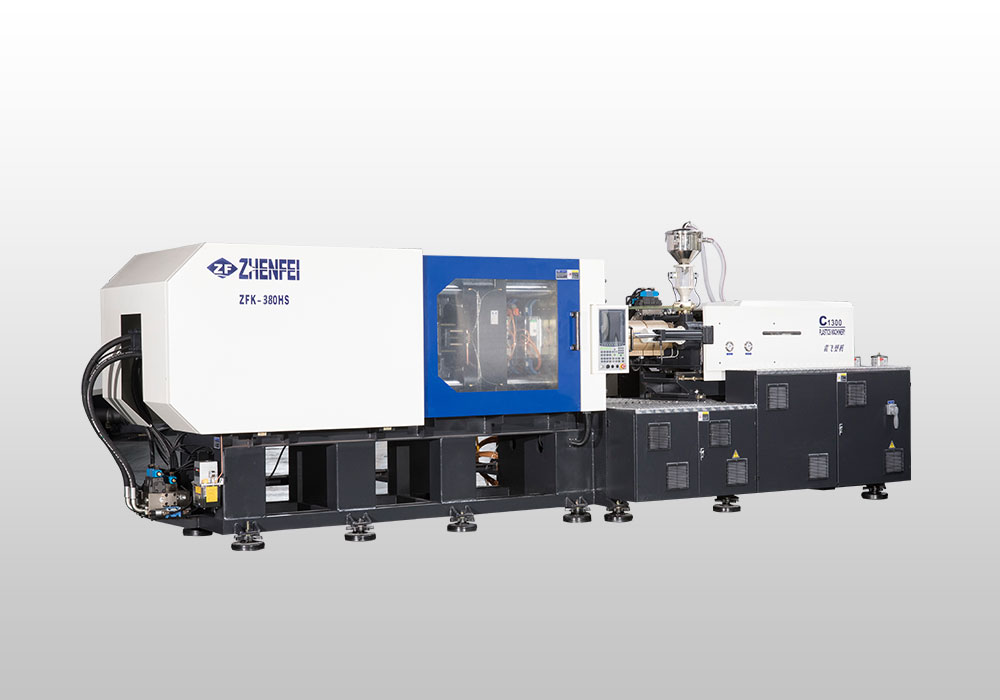A.Temperature control
1. Barrel temperature: The temperature that needs to be controlled during the injection molding process includes barrel temperature, nozzle temperature and mold temperature. The first two temperatures mainly affect the plasticization and flow of plastics, while the latter temperature mainly affects the flow and cooling of plastics. Each plastic has a different flow temperature. For the same plastic, due to different sources or grades, its flow temperature and decomposition temperature are different. This is due to the difference in average molecular weight and molecular weight distribution. Plastics in different types of injection The plasticizing process in the machine is also different, so the temperature of the barrel is also different.
2. Nozzle temperature: The nozzle temperature is usually slightly lower than the maximum temperature of the barrel. This is to prevent the "salivation" that may occur in the straight-through nozzle. The temperature of the nozzle should not be too low, otherwise the nozzle will be blocked due to the early solidification of the melt, or the performance of the product will be affected due to the injection of the early solidification material into the cavity.
3. Mold temperature: Mold temperature has a great influence on the internal performance and apparent quality of the product. The mold temperature depends on the crystallinity of the plastic, the size and structure of the product, performance requirements, and other process conditions (melt temperature, injection speed and injection pressure, molding cycle, etc.).
B. Pressure control
The pressure in the injection molding process includes plasticizing pressure and injection pressure, and directly affects the plasticization of plastics and product quality.
1. Plasticizing pressure: (back pressure) When using a screw injection machine, the pressure on the top of the screw when the screw is rotated and retreated is called plasticizing pressure, also known as back pressure. The size of this pressure can be adjusted by the overflow valve in the hydraulic system. In the injection, the size of the plasticizing pressure is constant with the rotation speed of the screw. When the plasticizing pressure is increased, the temperature of the melt will be increased, but the speed of the plasticizing will be reduced. In addition, increasing the plasticizing pressure can often make the temperature of the melt uniform, the mixing of the pigments and the discharge of the gas in the melt. In general operation, the decision of plasticizing pressure should be as low as possible under the premise of ensuring the quality of the product. The specific value varies with the type of plastic used, but usually rarely exceeds 20 kg/cm².
2Injection pressure: In the current production, the injection pressure of almost all injection machines is based on the pressure applied by the plunger or the top of the screw to the plastic (converted by the oil pressure) as the standard. The role of injection pressure in injection molding is to overcome the flow resistance of the plastic from the barrel to the cavity, give the molten material the rate of filling the mold and compact the molten material.

C. Molding cycle
The time required to complete an injection molding process is called the molding cycle, also called the molding cycle. It actually includes the following parts:
Molding cycle: The molding cycle directly affects labor productivity and equipment utilization. Therefore, in the production process, the relevant time in the molding cycle should be shortened as much as possible under the premise of ensuring quality. In the entire molding cycle, injection time and cooling time are the most important, and they all have a decisive influence on the quality of the product. The filling time in the injection time is directly inversely proportional to the filling rate, and the filling time in production is generally about 3-5 seconds.
The holding time in the injection time is the pressure time for the plastic in the cavity, and it takes up a large proportion in the entire injection time, generally about 20-120 seconds (extra-thick parts can be as high as 5-10 minutes). Before the molten material at the gate is frozen, the holding time has an impact on the accuracy of the product size, if it is later, it has no effect. The holding time also has the most favorable value, which is known to depend on the material temperature, mold temperature, and the size of the main runner and gate. If the dimensions of the sprue and the gate and the process conditions are normal, usually the pressure value that gives the smallest fluctuation range of the product shrinkage rate shall prevail. The cooling time is mainly determined by the thickness of the product, the thermal and crystalline properties of the plastic, and the mold temperature. The end of the cooling time should be based on the principle of ensuring that no changes are caused when the product is demolded. The cooling time is generally between 30 and 120 seconds. It is not necessary for the cooling time to be too long. It will not only reduce production efficiency, but also affect complex parts. It is difficult to demould, and demoulding stress may even occur when demolding forcefully. The other time in the molding cycle is related to whether the production process is continuous and automated, and the degree of continuity and automation.